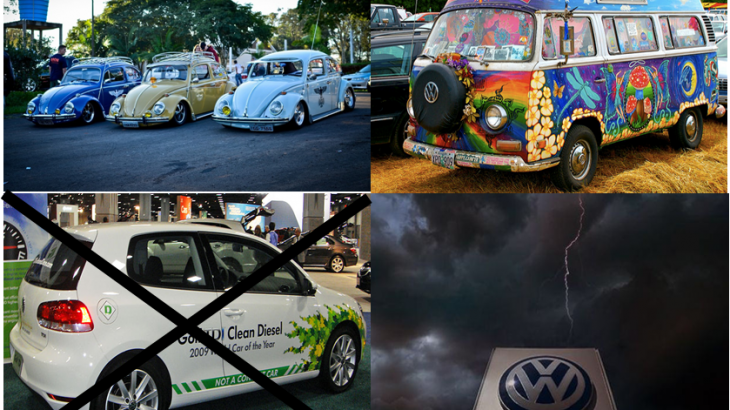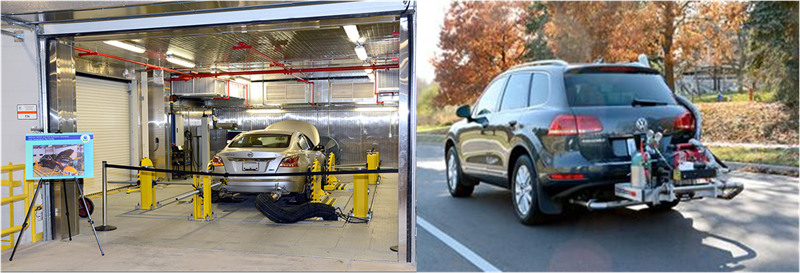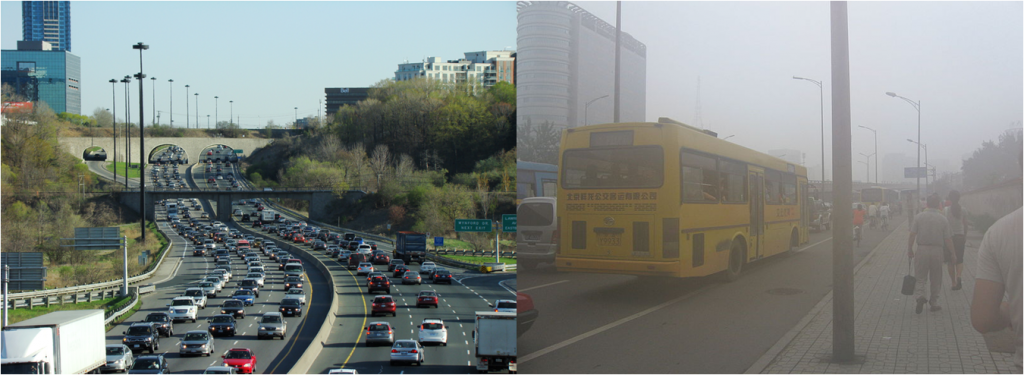Sri Ray-Chauduri, Technology & Engineering editor
Earlier this year Volkswagen dealers in Canada and the US began selling retrofitted updates of select diesel car models that had been implicated in the company’s 2015 emissions scandal. There was a time when the word Volkswagen evoked images of playing punch-buggy on long family road trips, or brightly painted “vee-dub”camper vans celebrating a hippie vibe. But following the company’s admission that it deliberately cheated to pass the US Environmental Protection Agency’s (EPA) emissions tests, the automaker has become synonymous with Dieselgate. To date, the emissions scandal has involved almost 11 million vehicles worldwide, resulted in criminal charges against 7 company executives, and is estimated to have cost Volkswagen over 20 billion US dollars in North America alone. During a recent episode of CBC’s The Next Chapter, advertising expert Terry O’Reilly noted it was sad that a–
“brand built on utter and sheer honesty has now been caught in one of the most deceptive practices…in automotive history.”
Dieselgate, also referred to as “diesel dupe”, involved Volkswagen installing defeat devices in its vehicles that fooled EPA emissions tests. These “devices” weren’t actually devices at all, but software that helped a car sense when it was undergoing emissions testing by measuring different variables such as the position of its steering wheel, its speed, how long the engine was running and its barometric pressure. As a result, the car produced compliant emissions results during testing on a chassis dynamometer in a controlled lab environment. However, when the car was in normal everyday use, the code switched to a “road-calibration” which didn’t activate the vehicle’s emissions control systems. This resulted in the car emitting nitrogen oxides (NOx) at levels that far exceeded permissible limits.
Left: A vehicle undergoing fuel economy and emission testing at EPA’s National Vehicle and Fuel Emissions Laboratory (NVFEL) cold temperature test facility. Right: An on-road test of a vehicle using a Portable Emissions Measurement System (PEMS). (Photos: EPA).
Interestingly, all of this was discovered somewhat by accident by the non-profit group The International Council on Clean Transportation (ICCT). The ICCT had commissioned a lab at West Virginia University to run on-road emissions tests of a few different diesel cars with the expectation they would all pass and support the idea of clean diesel. However, to the surprise of the lab’s engineers and scientists, the Volkswagens exceeded NOx limits under multiple driving conditions during their on-road testing. The researchers initially questioned their results but when retests by the California Air and Resources Board (CARB) resulted in similar findings it was clear something was up, and in September 2015 the EPA informed Volkswagen it was in violation of the US Clean Air Act.
In the aftermath of Dieselgate, the EPA filed suit against Fiat Chrysler for installing similar defeat software in some of its 3.0-litre diesel models, and in the past, the agency has also identified discrepancies with fuel economy ratings provided by automakers for certain Kia, Ford, and Hyundai models. The EPA had also hoped to expand on-road testing of vehicles to minimize any further attempts to cheat the system. However some are wondering what, if any, role the EPA will have in emissions testing in the future due to the current US budget proposing to eliminate a whopping 99% of the agency’s vehicle and fuel testing budget (including over 150 full-time jobs), potentially leaving the future of the program in peril.
Left: Traffic congestion on the Don Valley Parkway in Toronto, Canada (by Floydian CC by 3.0). Right: People walking in smog and traffic in Beijing, China. (by Berserkerus CC by 2.5)
Eradicating vehicle emissions testing has no real winners. Transportation is a large contributor to air pollution in North America NOx is of particular concern because it plays a major role in the formation of ground level ozone and can also contribute to acid deposition. Ground level ozone pollution can reduce air quality (a primary factor in smog), negatively affect ecosystems, and damage materials such as rubber and textiles. Both ground level ozone (different from the ozone layer in the stratosphere that protects the Earth from ultraviolet radiation) and nitrogen dioxide (a component of NOx) can also aggravate respiratory conditions.
Emissions standards for vehicles are harmonized between the US and Canada with 43.5 mg/km (70 mg/mile) set as the acceptable limit for NOx, and some of the flagged Volkswagen models were exceeding these standards by up to 40 times. It can be difficult to estimate the overall increase in NOx emissions due to variations in driving habits and conditions, but calculations suggest the offending vehicles might have resulted in 235,000 to 950,000 tonnes of additional NOx being released into the atmosphere annually around the world. Dieselgate is far from being an invisible crime, as poor air quality is linked to respiratory and cardiovascular issues, and recent studies quantifying the public health effect of the scandal estimate it might be responsible for 60 premature deaths in the US, and almost 1200 in Europe.
…calculations suggest the offending vehicles might have resulted in 235,000 to 950,000 tonnes of additional NOx being released into the atmosphere annually around the world.
So why does diesel fuel produce so much NOx? Diesel engines operate at higher temperatures and pressures than their gasoline counterparts, which afford them good fuel economy but also result in more NOx production. There are different ways of managing the issue, but most diesel based vehicles today use selective catalytic reduction (SCR), an effective emissions control technology that can reduce NOx emissions by up to 90%. In general, it works by using a urea-based substance (that is stored in a tank inside the vehicle) to selectively breakdown NOx to less problematic substances. Volkswagen uses SCR in some of its cars, but also used the Lean NOx trap (LNT), a method that “traps” the NOx and reduces it to nitrogen by operating the engine in a fuel-rich mode, which can reduce fuel efficiency. At the time, it seemed Volkswagen engineering had somehow innovated a way to meet NOx emissions standards and maintain superior fuel economy. But some in the automotive industry were suspicious of the dual claim, and ultimately the only innovation turned out to be the installation of the defeat device.
Volkswagen electric concept cars. Left: The self-driving I.D. Buzz (inspired by Volkswagen Type 2 or Microbus) presented at 2017 Geneva Motor Show (by Norbert Aepli, CC by 4.0). Right: The self-driving I.D. Concept (inspired by Volkswagen Golf) presented at the 2016 Paris World Motor Show (by Thesupermat CC by 4.0)
To rectify part of the subterfuge, the EPA along with CARB approved a remedy in January for Volkswagen to fix the affected 2.0-litre diesel vehicles. The modification is being carried out in two phases: the first, which started this year, replaces the defeat device with software that does not deactivate the emissions controls under normal driving conditions, and the second, slated for 2018, will involve installation of emissions control hardware which may include a diesel particulate filter, diesel oxidation catalyst, and SCR converter. The proposed retrofit is the same for Canada and the US, and if owners don’t want to deal with retrofitted cars, they can trade them in or sell them back to the company.
Volkswagen has stated the proposed fix will not impact the vehicles’ reliability, performance, or durability. However, some of the modifications that have already taken place in Europe (where NOx standards are less stringent than in North America) have left some owners dissatisfied and complaining of reduced fuel economy, and issues with reliable performance.
But building better diesel vehicles is no longer a priority for Volkswagen as it shifts its sights to the electric car market, recently announcing its goal to sell 2 to 3 million battery-powered electric vehicles annually by 2025.The company recently featured several affordable electric car options in China, where electric vehicles sales are soaring, and also unveiled its concept car VW ID Buzz, the modern self-driving electric version of the classic microbus, at this year’s Detroit Auto Show. With companies like Tesla, BMW, and Chevrolet already leading the electric vehicle game it remains to be seen how Volkswagen will fare, but the automaker seems intent to bet on electric and leave the deception of Dieselgate in the high NOx dust.
** Header Image clockwise from top left: Volkswagen’s iconic Beetle (officially known as VW Type 1) (CC0) ; Brightly painted Volkswagen Microbus or Vee-Dub (officially known as VW Type 2) (by Damien CC by 2.0); Volkswagen company logo under stormy skies (by Automobile Italia CC by 2.0); Volkswagen advertising its Golf model as Clean Diesel at the 2010 Washington Auto Show (by Mariordo Mario Roberto Duran Ortiz CC by 3.0)







